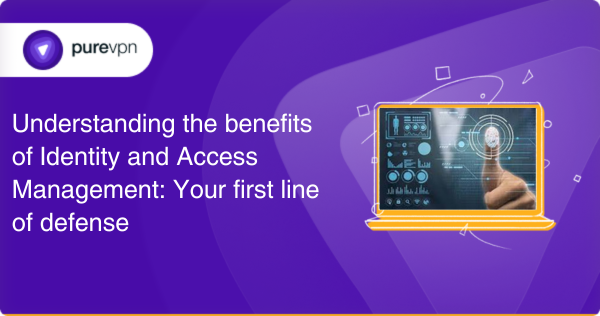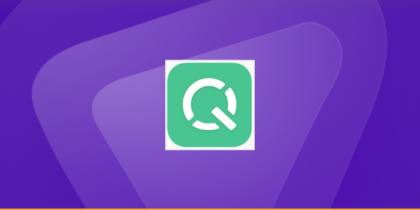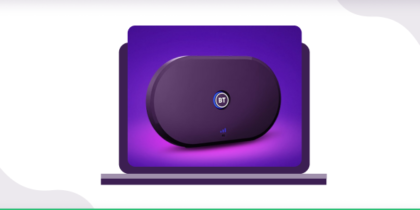Identity Management Day has come to us as the opportunity to learn about our role in our digital ecosystem. So whatever role you play: a consumer, employer, employee, or partner, your online presence matters, juggling with passwords and accepting links from untrusted sources are the biggest threats to us, and we must be aware of them.
Let’s pledge that you will understand today how important your data and safety are to this digitally evolving environment. Let’s vow that with IAM (Identity Access Management) Day recognition, you will celebrate your identity every day.
Ready to make an impact! Understand social security, personal ability, and the significance it can create.

What is Identity and Access Management: A general overview
At the heart of cybersecurity lies the framework of I AM – a carefully crafted system of policies, procedures, and processes that empowers organizations to exercise heightened control over user authentication and access to sensitive data, systems, and resources.
By taming identity-related risks and curbing security breaches, IAM serves as a bulwark of security compliance, incorporating a culture of robust security across the entire organization.
Fortifying cybersecurity: The vital role of IAM
In today’s digital era, where your sensitive information and critical systems are constantly under threat, businesses and organizations must adopt a proactive approach to cybersecurity. The increasing complexity of IT environments, coupled with the ever-evolving tactics of cybercriminals, has made it imperative to have a comprehensive and effective system in place for managing your identities and access to sensitive resources.
Access Management (IAM) is a crucial component of a robust cybersecurity framework that not only helps organizations mitigate security risks but also ensures regulatory compliance and enhances overall security methods.
Let’s delve deeper to uncover the transformative potential of Identity and Access Management for you, your business, and society with examples.
Improved security
Healthcare provider, Providence Health & Services, implemented IAM to help meet HIPAA compliance requirements and secure patient data.
Benefit
It helped them reduce the risk of data breaches and unauthorized access to patient information.
Simplified access management
The University of Wisconsin-Madison implemented IAM to simplify access management for its 40,000 students, faculty, and staff.
Benefit
It streamlined the process of granting and revoking access to various systems and resources, reducing the burden on IT staff.
Increased regulatory compliance
The Department of Homeland Security implemented IAM to comply with FISMA regulations and protect sensitive government data.
Benefit
The solution helped them enforce strong access controls and audit user activity.
Improved user experience
Dropbox executed IAM to provide SSO for their customers, allowing them to access Dropbox and other cloud-based applications with a single set of login credentials.
Benefit
It improved the user experience and reduced the need for customers to remember multiple login credentials.
Cost savings
Financial services provider, BMO Financial Group, implemented IAM to reduce the cost of managing access requests for their 45,000 employees.
Benefit
It helped them automate many access management tasks and reduce the need for IT staff to manually manage access requests.
Improved productivity
Insurance provider, The Co-operators, implemented IAM to provide SSO for their employees, allowing them to access various systems and resources with a single set of login credentials.
Benefit
The solution improved productivity by reducing the time employees spent logging in and managing multiple login credentials.
Better risk management
Energy company, BP, implemented IAM to manage access to critical systems and resources, reducing the risk of cyber-attacks and unauthorized access.
Benefit
Helped them identify and mitigate potential security risks more quickly and effectively.
Enhanced collaboration
Software provider, Atlassian, implemented IAM to enable collaboration between their employees and external partners.
Benefit
This helped them securely share information and resources with partners while maintaining strong access controls and audit trails.
Improved compliance reporting
The credit rating agency, Equifax, implemented IAM to comply with regulatory requirements and protect sensitive customer data.
Benefit
Helped them generate detailed compliance reports and provide evidence of strong access controls and data protection measures.
Increased scalability
Technology company, Cisco, implemented IAM to manage access for their rapidly growing workforce of 80,000 employees.
Benefit
It helped them automate many access management tasks and scale their IAM system to meet the needs of their expanding workforce.
IAM features and capabilities that could benefit you
Identity access management comes as a complete tool to prevent you from vulnerabilities. This helps you to be secure when you are a team or an individual. Being secure is your right and to snatch that right from intruders is what is required. IAM will help you do so, with some of the features and capabilities mentioned here, take a look:
- Multi-Factor Authentication (MFA): It is a security feature that requires you to provide more than one form of identification to access a system or resource. It includes passwords, security tokens, and biometric authentication like fingerprint or facial recognition.
MFA adds a layer of security to the login process, making it more difficult for hackers to gain access to sensitive data.
- Access controls: It enables IT administrators to specify which users have access to specific systems or resources and the level of access they have. Access controls can be based on various factors like job role, location, and time of day.
This helps ensure that only authorized users have access to sensitive data or resources.
- User provisioning: It is the process of granting users access to systems and resources. IAM systems can automate the user provisioning process, making it faster and more efficient.
This helps reduce the risk of human error and ensures that new employees have access to the systems and resources they need to do their jobs.
- De-provisioning: The process of revoking access to systems and resources when a user no longer needs access. IAM systems can automate the de-provisioning process, ensuring that terminated employees no longer have access to sensitive data or resources.
This helps your business reduce the risk of unauthorized access and data breaches.
- Single Sign-On (SSO): A feature that allows you or your employees to access multiple systems or resources with a single set of login credentials. This simplifies the login process for users and reduces the need for multiple usernames and passwords.
SSO can also help improve security by reducing the risk of users writing down passwords or using weak passwords.
- Identity federation: The process of linking user identities across multiple systems or domains. This enables you to access multiple systems or resources using a single set of login credentials.
Identity federation can help improve security by reducing the need for you to remember multiple usernames and passwords.
- Role-Based Access Control (RBAC): It is a type of access control that assigns permissions to your employees based on their job roles. This helps ensure that they only have access to the systems and resources they need to perform their job duties.
RBAC can also help simplify the access management process for IT administrators.
Have a safe pick: Some famous IAM solutions
Opting for the ideal IAM solution solely depends on your enterprise’s needs. Some might require a full-fledged system while others may only need IAM tools to support their data needs. Here are some of the most famous IAM solution providers businesses have opted for.
Microsoft Azure Active Directory
Microsoft’s cloud-based IAM solution provides a comprehensive set of features:
- SSO,
- MFA,
- access management,
- identity governance, and
- customer identity and access management.
Unique features: Seamless integration with Microsoft services and extensive customization options.
Drawbacks: Can be too complex for smaller organizations with limited IT resources. Also, support responsiveness is weak.
Okta
Okta provides a cloud-based IAM solution that offers a wide range of features:
- SSO,
- MFA,
- access management, and customer identity and
- access management.
Unique features: Easy integration with third-party applications and a broad range of supported protocols.
Drawbacks: It is a cloud-based solution, which may be a concern for organizations with stringent data privacy regulations. Some customers have reported issues with integration difficulties and a lack of customization options.
ForgeRock
ForgeRock offers a suite of IAM solutions, including
- identity governance,
- access management, and
- customer identity and access management.
Unique features: Flexible deployment options and a high level of scalability.
Drawback: It is costly and may require extensive IT expertise to implement and manage effectively. Issues with documentation and support have been prevalent too.
Ping Identity
Ping Identity provides a range of IAM solutions with reliability.
Unique features: It’s advanced threat detection and prevention capabilities.
Drawbacks: Require significant IT resources as the solution is complex. Customers have reported issues with the user interface and documentation.
IBM Security Identity and Access Management
IBM provides a range of IAM solutions:
- access management,
- identity governance, and
- cloud identity services.
Unique features: AI-powered authentication engine and advanced analytics capabilities.
Drawbacks: Complex to implement and manage, requiring significant IT expertise. Lacking responsiveness.
RSA Security
Provides IAM solutions that include access management, identity governance, and customer identity and access management.
Unique features: A comprehensive set of identity verification methods and integrated fraud detection capabilities.
Drawbacks: Solutions can be costly and may require significant IT resources to manage effectively. Also, some customers have reported issues with support responsiveness.
CyberArk
CyberArk provides a privileged access management (PAM) solution that offers comprehensive control over privileged access to critical systems and data.
Unique features: Advanced threat detection and response capabilities and a flexible deployment model.
Drawbacks: Can be complex to implement and manage, requiring significant IT resources.
SailPoint
It provides an identity governance solution that allows organizations to manage and control access to sensitive data and applications.
Unique features: Include advanced risk analytics and predictive identity governance capabilities.
Drawbacks: Costly and may require significant IT expertise to implement and manage effectively.
OneLogin
Provides a cloud-based IAM solution that offers SSO, MFA, and access management features.
Unique features: An intuitive user interface and extensive customization options.
Drawbacks: Solutions can be complex to implement and manage, requiring significant IT expertise. Integration difficulties and support responsiveness have also been recorded.
Centrify
Centrify provides an identity and access management solution that offers secure access to cloud-based and on-premises applications and systems.
Unique features: Advanced privilege management and a flexible deployment model.
Drawbacks: Complex to implement and manage, requiring significant IT resources.
PureSquare: Easy and adaptable set of solutions to your IAM needs
PureSquare comes with an easy and one-stop solution for all your needs. If you want to protect the data of your kin or company, it comes with many solutions you can opt for or subscribe to a bundle offer.
So let’s be in the league of over 3 million users who:
- Browse privately with a secure VPN (PureVPN)
- Generate and store ultra-secure passwords (PureKeep)
- Lock down social media privacy settings (PurePrivacy)
- Encrypt, sync and protect data (PureEncrypt)
- Unlock media content, secure gaming accounts(dedicated IP)
- Access encrypted networks while working from home anywhere(Port-forwarding)
- Increase the network security of business and remote teams(PureDome)
Don’t hesitate to make PureSquare your IAM partner, it is easy, safe, and reliable.
Future of Identity and Access Management
Identity and access management (IAM) has become an increasingly important area of focus for organizations as they seek to protect their digital assets and data from cyber threats.
While there are many potential developments on the horizon for IAM, it is important to take a critical look at what these developments may mean for organizations and their users.
Use of biometric authentication in IAM systems
While biometrics can provide a higher level of security and convenience than traditional passwords, they also raise concerns about privacy and potential misuse of sensitive user data.
Organizations will need to be transparent with users about how their biometric data is being collected, stored, and used, and ensure that appropriate safeguards are in place to prevent unauthorized access.
Use of AI-driven IAM systems to detect and prevent cyber threats
While this approach has the potential to provide real-time threat detection and response, it also raises concerns about the potential for false positives or false negatives.
There will be a need to carefully evaluate the effectiveness and accuracy of these systems, and ensure that appropriate human oversight is in place to prevent errors or biases.
Zero-trust security
It is another trend that is gaining popularity in the IAM space. While this approach can help reduce the risk of data breaches by assuming that every user and device is potentially compromised, it also requires a significant investment in infrastructure and ongoing monitoring and maintenance.
Organizations need to carefully evaluate the costs and benefits of zero-trust security, and ensure that they have the resources and expertise to implement and maintain these systems effectively.
Privacy-enhancing technologies
They are also likely to play a larger role in IAM systems in the future. While these technologies can help protect sensitive user data from unauthorized access or misuse, they also raise concerns about potential performance or usability issues.
There is a need to carefully evaluate the trade-offs between privacy and usability, and ensure that they are transparent with users about how their data is being protected.
Access management for IoT devices
It is another area of potential development for IAM systems. While this can help organizations better manage and secure their growing number of connected devices, it also raises concerns about potential vulnerabilities or interoperability issues.
There is a major development in IAM systems, management, and implications but still keeping up with the technology is difficult because there are challenges that might affect the proper implementations.
Wrapping up: Securing the future
Cybersecurity strategies have evolved with time and IAM has acted as a heart to it. So, be with us on a journey to witness the importance of IAM for us and our generations. With Identity and Access Management, we will make a secure environment for our workforce, our business, and ourselves.
Reap the benefits of IAM and help others do the same!
Frequently asked questions
When adding IAM to strategic planning management becomes easier and more robust. Risks can be efficiently mitigated and deadlines to be met efficiently.
IAM components are:
authentication,
authorization,
user management, and
central user repository.
It is a category of software tools that allows businesses of all sizes to generally manage the identities and access rights of all their employees.
Identity and Access Management (IAM) security is an essential part of overall IT security. It manages digital identities and user access to data, systems, and resources within an organization.
In organizations, IAM is usually controlled by IT managers.



